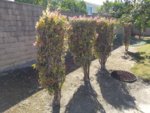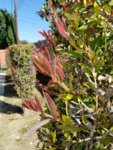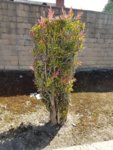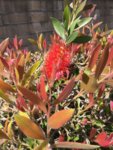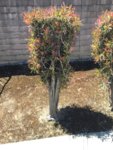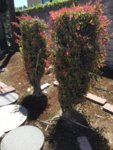Joshuro
Seedling
I have just bought a house with 12 old bottlebrush trees planted in the backyard. I believe they are approximately 25 - 30 years old. I am uncertain of which exact cultivar they represent, but I live in Southern California in a rather arid climate and they appear to be quite healthy growing in ground without regular watering. They have all been kept cut short by the previous owner to a height of around five feet and the majority of them show a bushy multi-trunked structure while a few have single thick trunks.
I think they have great potential for yamadori bonsai projects!
I am a bit tentative, because I have no experience with collecting trees for yamadori and have only rudimentary experience with bonsai in general, so before I dig these precious trees out of the ground I thought it would be best to seek advice from anyone who may have experience with the species and with working with them as yamadori bonsai.
In particular, I’d like to ask for tips about the best method for ensuring that they survive the transition from the ground to the pot, and whether it would be best to try shaping them for a while while they remain in ground before I dig them up, or if it is best to wait for shaping until after they are established in pots.
Thanks in advance for any kernels of wisdom,
Josh R.
I think they have great potential for yamadori bonsai projects!
I am a bit tentative, because I have no experience with collecting trees for yamadori and have only rudimentary experience with bonsai in general, so before I dig these precious trees out of the ground I thought it would be best to seek advice from anyone who may have experience with the species and with working with them as yamadori bonsai.
In particular, I’d like to ask for tips about the best method for ensuring that they survive the transition from the ground to the pot, and whether it would be best to try shaping them for a while while they remain in ground before I dig them up, or if it is best to wait for shaping until after they are established in pots.
Thanks in advance for any kernels of wisdom,
Josh R.

